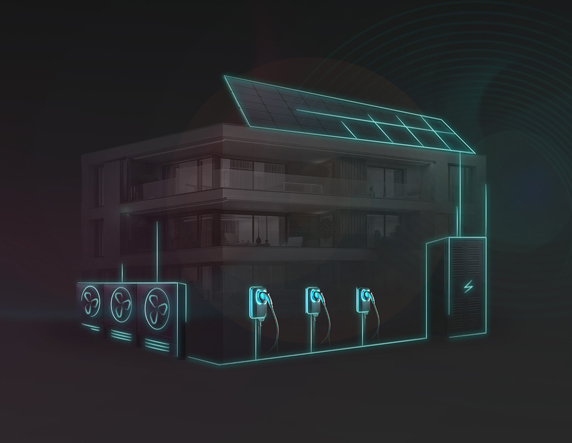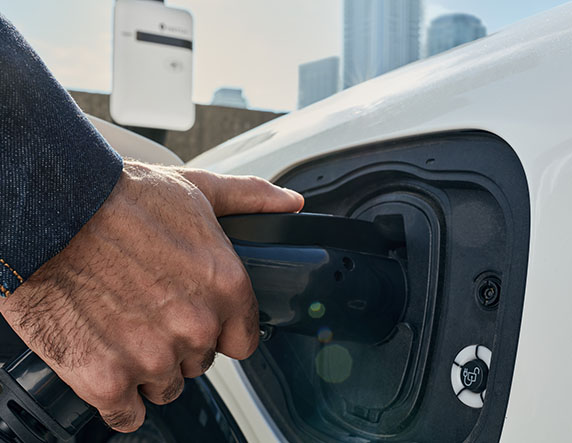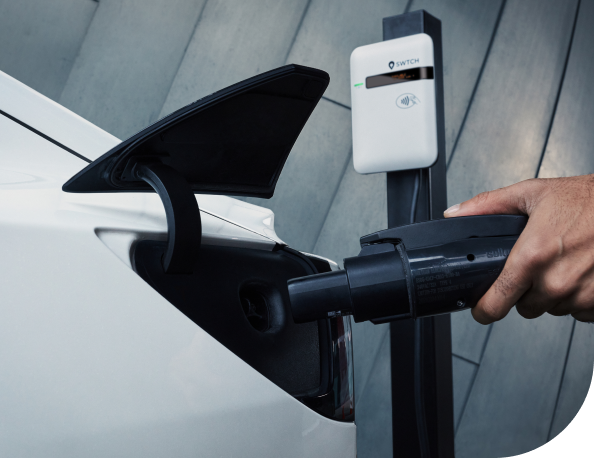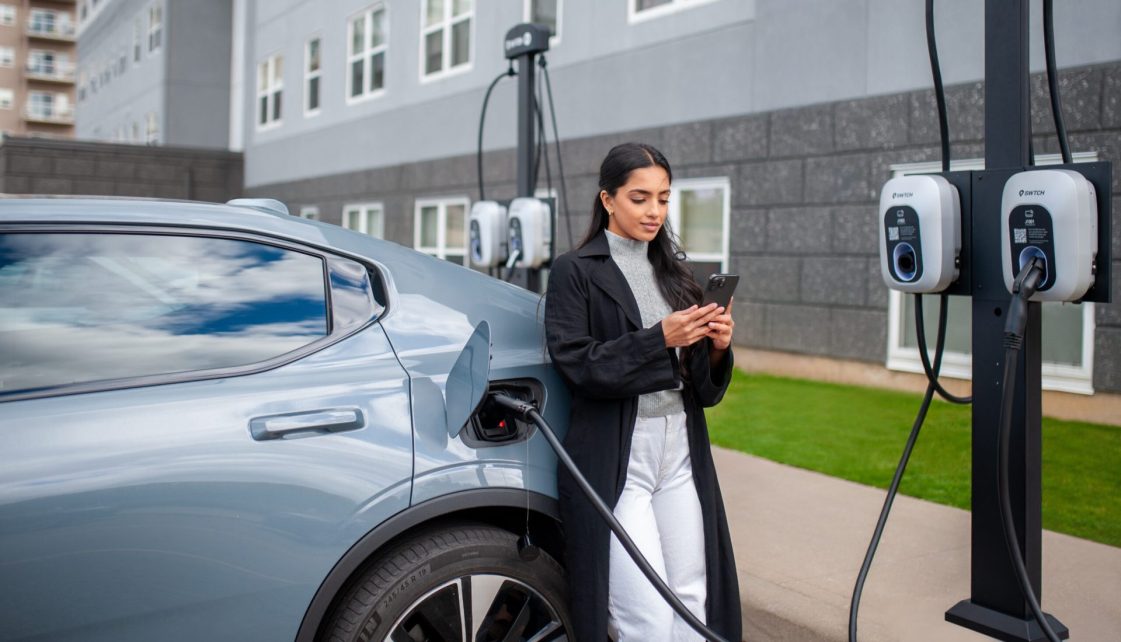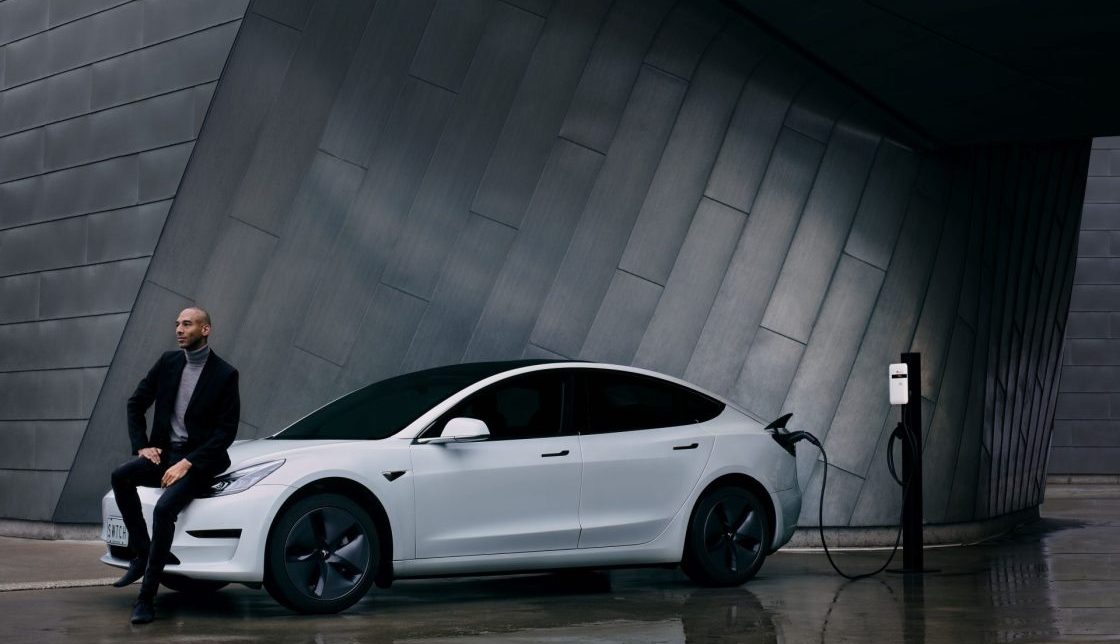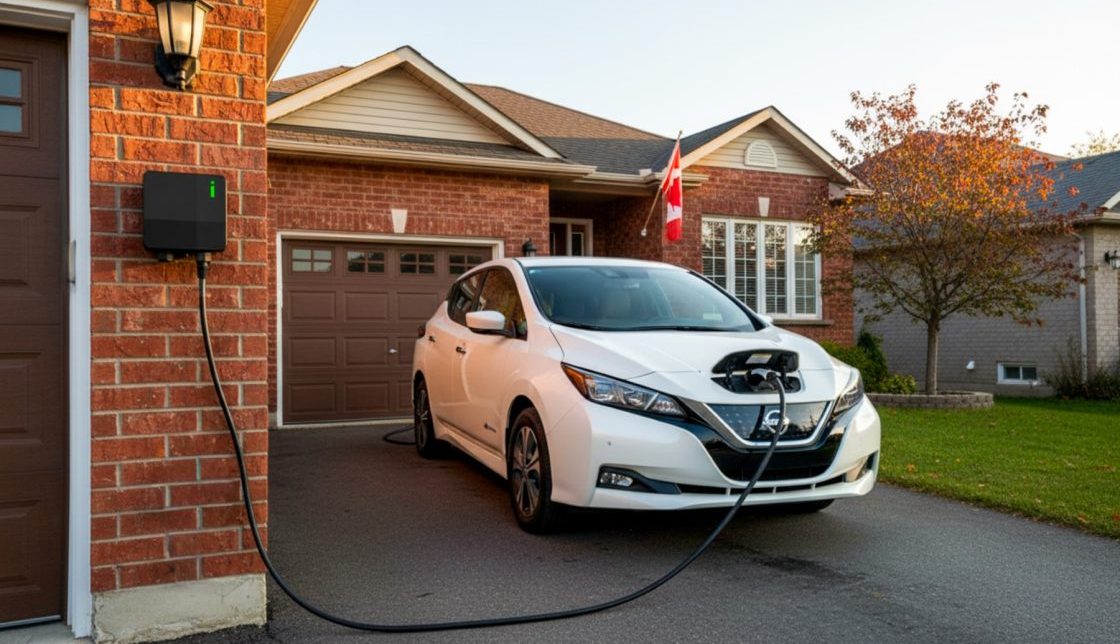EV charging in multifamily buildings: Expert insights for a smooth, successful rollout
The transition to electric vehicles presents unique challenges for multi-family buildings, where implementing charging infrastructure can involve technical, financial, and administrative hurdles. At the 2025 EV & Charging Expo in Toronto, moderator Amanda Mosca from The Atmospheric Fund led a panel of industry experts who shared practical insights on making EV charging work in condos, apartments, and townhouses.
Mark Marmer from Signature Electric, Luis Leal from Phoenix Contact, and Thomas Martin from SWTCH weighed in, giving property managers and condo boards the insights they need to navigate this rapidly evolving landscape. The key takeaways? Start planning for EV charging now, think about how to succeed in the long term, and find trusted partners to guide you through the process.
Here’s a look at some of the highlights of their discussion.
What are the main challenges to adding EV charging in older multifamily buildings?
When it comes to implementing EV charging in existing buildings, the panel identified several critical barriers, with cost leading the way.
“I don’t care where you go, the biggest problem is money,” Mark said. “Especially if it’s in a condo. They haven’t usually budgeted for whatever’s needed.”
But beyond this near-universal concern, two more common challenges were identified by the panel as presenting likely complications: dated electrical hardware and a lack of historical energy usage data.
“A lot of the time, the physical hardware in the building is dated, so sourcing some of those parts can be a challenge,” Thomas noted. “But we also need to understand the load profile of the building when installing chargers. A lot of these buildings weren’t necessarily installed with technology to keep a historical record of when they’re experiencing their peak. We need to figure that out to make more educated decisions around how to plan for the future.”
In other words, even before many property owners can worry about how much it will cost to install EV charging, there’s a need to do foundational work to even understand what it will take to get EV charging installed.
How can buildings assess their electrical capacity?
Understanding a building’s electrical capacity starts with what experts call a “load evaluation” – a process that examines the building’s electrical service size and historical energy usage through electrical bills. This evaluation provides property managers with critical insights about available capacity and potential constraints.
“These evaluations are very valuable,” Mark explained. “In part, they provide a snapshot of what’s happening in the building. Sometimes the building, especially the older buildings, they’re having a problem anyway, and it needs to be dealt with.”
The panel highlighted that modern technology now allows for more dynamic approaches to energy management.
“If we can put in a system that’s intelligent and can adjust to changing data in real time, you don’t necessarily have to worry about making assumptions that have to last 10-20 years,” Thomas said. “The system’s going to adapt with every new EV that starts plugging in.”
What solutions exist for buildings with limited electrical capacity?
Every building, regardless of age, needs an EV energy management system, according to the panellists. It’s the only viable path forward in a world where electric mobility is becoming the norm. But with limited capacity, how can properties realistically install sufficient charging to service the growing number of EV drivers? The answer is not to install dramatically more electrical capacity, but rather to lean on intelligent energy management to do more with less.
Thomas offered an analogy to illustrate the concept: “In a home or a condo unit, your water pipe isn’t designed to have every faucet, toilet, dishwasher, and shower running at the same time. In the very rare scenario – call it Thanksgiving dinner, where everyone’s home using water at the same time, the pressure drops, but we don’t need to design for that scenario when we’re building the house.”
Instead, the goal should be to match the infrastructure to typical usage patterns and so that when usage spikes higher, it’s still possible to achieve a desirable outcome for EV drivers plugging in at a given property. Generally, that means ensuring cars are ready to go first thing in the morning.
“If, by 6 am, everyone’s vehicle is full… as long as we can meet that objective, even in the worst-case scenarios, the building wins,” Thomas said.
Planning for all residents, not just early adopters
Crucially, the panel strongly emphasized the importance of thinking long-term and planning for widespread adoption, not just accommodating the first few EV owners who offer to install a solution for themselves. This forward-thinking approach offers several benefits:
- Ensures consistent infrastructure
- Provides equal treatment for all residents
- Avoids piecemeal solutions that become problematic later
- Allows for fair cost distribution
“You will be sorry if you don’t plan,” Mark warned. “I can’t tell you how many times we get all settled to put in the new system, and then they want to know: ‘What am I going to do about these three people who installed something else earlier?’”
Thomas added, “Build a plan for everyone, present and future, and try to make the 100th person’s cost to install the same as the first.”
A comprehensive plan, established as early as possible, helps avoid the “hodgepodge of solutions” that can result from addressing requests one at a time.
Getting stakeholder buy-in
Implementing EV charging requires support from multiple stakeholders, including condo boards, property managers, and residents. The panellists recommended starting with fundamental questions to establish a consensus before getting into technical details:
- What charging capacity will be guaranteed to each resident?
- What will the approximate cost be?
- Can residents expect consistent availability?
As Thomas put it, “At the end of the day, residents are looking to know: ‘Can I buy an EV? Is this going to be within budget?’”
Mark also cautioned about the timing of resident surveys, which are a standard means of understanding demand for charging. His suggestion is that properties should have a solid plan in mind before soliciting feedback, as a survey raises expectations around access to charging and how quickly it will be installed.
Luis agreed, saying, “Communication is key. In my own experience, it was not very well done. They just sent a random email saying, ‘We’re gonna install EV chargers.’ So, nothing about the costs, who is going to be operating the chargers… A good vendor should be able to help answer the important questions that residents will have and help them understand what is in store for them.”
Policy recommendations for the future
When asked about potential government policies that could accelerate EV charging adoption, the panellists had clear recommendations, though they were particularly united on one point: EV-readiness.
“EV-readiness is the most important thing,” Luis said. “So all the load calculations are done beforehand, all the electrical is ready, and property owners are ready to just deploy.”
Other recommendations included clarifying rules around using condo reserve funds for EV infrastructure and mandating conduit installation in concrete slabs during new construction to further ease installation. Overall, though, there was strong agreement that the best possible step to be made at the level of policy is to mandate that new buildings be ready to offer charging from day one.
It’s time for multifamily properties to prepare for EV charging
The EV charging landscape for multi-family buildings is complex but navigable with the right partners and approach. As Mark emphasized throughout the panel, finding trusted experts is essential for navigating this complicated process.
The panellists agreed that the best time to start planning for EV charging was yesterday, but today is the next-best option. With electric vehicle adoption accelerating, buildings that get ahead of the curve will be better positioned to meet resident demand and avoid rushed, potentially problematic implementations.
Start by assessing your electrical capacity, developing a comprehensive plan, and finding trusted industry partners who can guide you through the process.
Want to get your multifamily EV charging journey off on the right foot?
Contact us today! SWTCH was founded to solve the challenges of multifamily EV charging, and we’re happy to help.
